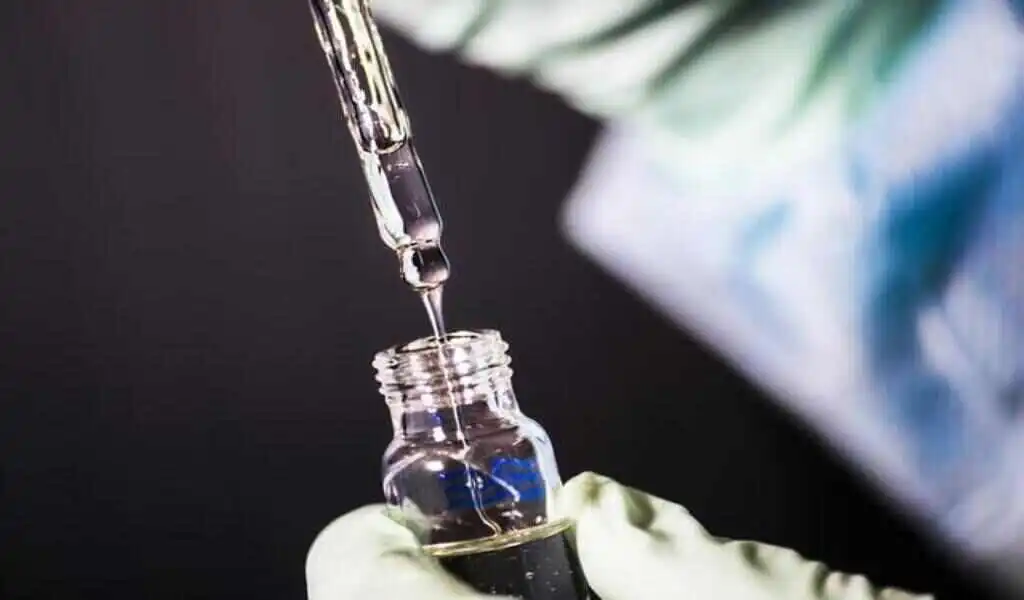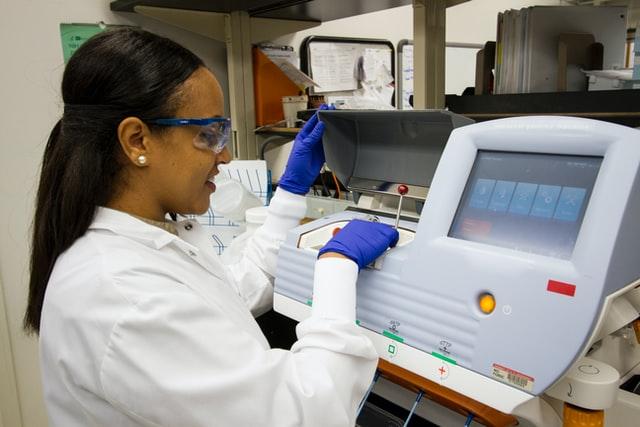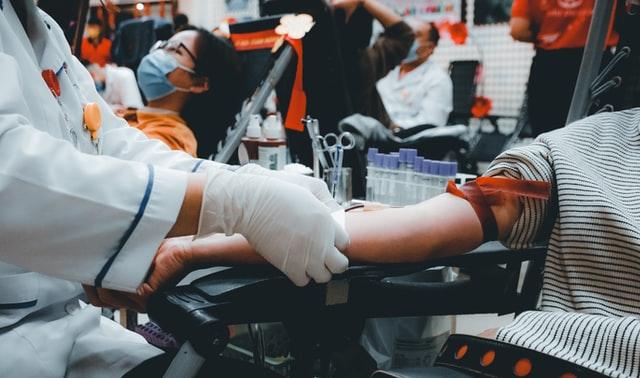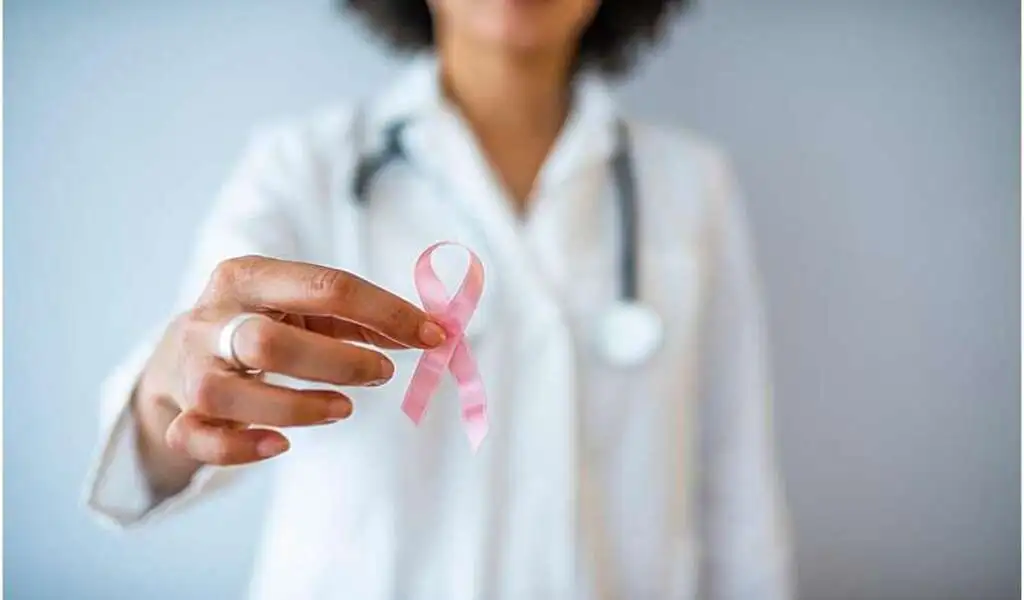Health
Understanding the Different Types of Clinical Trials

Medical research studies involving people are known as Clinical trials, and there are two main varieties. Many companies, such as Clinical Ink, help operate these two different trials. The first is an interventional trial designed to investigate the effects of a particular therapy or intervention; people are grouped according to their response to certain treatments. Researchers can then compare the results of the groups with each other. The second is an Observation study. These observation trials aim to examine people’s behavior under different circumstances. Despite observing the participants, the research team does not determine what treatments people receive. Participants do not take part in treatment groups.
There are lots of different trials within these two groups. Here is a little more about these different studies.
Cross Sectional Studies
A cross-sectional study is done at a single point in time or within a short time frame. The researchers determine whether there is a link between someone exposed to a risk factor and someone who developed cancer. The cross-sectional study is the quickest and cheapest type of study. However, the results are less useful. To find a possible relationship, researchers sometimes do cross-sectional studies first. Afterward, they conduct a case-control study or a cohort study to examine the problem in more detail.
Screening Trials
Early cancer detection is possible through screening, which is done before any symptoms manifest. The same can be said for screening trials made available to the general public. A certain cancer prevention program may be for people who have a high risk of developing it. New tests can be trialed to determine their reliability in detecting specific types of cancer. The researchers may also attempt to determine whether diagnosing cancer early has any benefits in general.
Multi-Arm Multi-Stage Trials
An experimental trial with multiple treatment groups, in addition to a standard treatment group, is called a multi-arm trial. The same control group is used in multi-arm multi-stage (MAMS) throughout the trial. As the trial proceeds, the remaining treatment groups are subject to change. If needed, a particular treatment group may be stopped from recruiting participants. It may be that there are enough participants to analyze the results. There’s a chance that they won’t get the results they wanted because of what early results have shown. Researchers may add more treatment groups when new drugs become available for examination. The benefit is that they don’t have to conduct a new trial for every new treatment they want to research. It makes the whole process quicker.

https://unsplash.com/s/photos/clinical-trials
Feasibility and Pilot Studies
A pilot study or a feasibility study is a smaller version of a study that is sometimes undertaken before a larger one.
Feasibility studies are performed to determine if the main study can be done. In order to find out what patients and doctors will think about the idea, as well as how long it will take to collect and analyze the data, the team hopes to survey patients and doctors. This kind of study doesn’t answer the main research question of if the treatment works.
An initial study consists of a smaller version of the main study. An initial study can help determine whether all the main components of the study are working together. Additionally, it may provide insights into the study’s research question. In some cases, the main study results include information collected in the pilot study.
Prevention Trials
During cancer prevention trials, treatment is tested to see if it prevents the disease from occurring. No cancer patients participate in these trials. People at an increased risk of developing cancer or those in the general population can enroll in these trials. For example, someone who has a strong family history of cancer could fall into this category.
Case Control Studies
In contrast to cohort studies, case-control studies follow the opposite pattern. Researchers will recruit two groups of participants for the study, people with and without diseases. In addition, they determine how many people have been exposed to a certain risk factor among the different groups. Researchers need to ensure that their results are accurate. To avoid having different general factors among different groups, such as age or gender, they try to ensure that they are equal.
In addition to being more valuable than cohort studies, case-control studies are faster and cheaper, although their results could be less reliable. Researchers often rely on participants’ memories to determine whether or not they were exposed to risk factors in the past, sometimes leading to inaccurate results, as people can forget things that happened in the past. The differences between association and cause also need to be considered. Factors can appear to cause diseases without necessarily causing them. An example is that people with a lower income could have a higher chance of developing cancer, although the income isn’t a direct factor.

https://unsplash.com/s/photos/clinical-trials
Cohort Trials
Groups of people form cohorts, so cohort studies are about groups of people. It is a longitudinal study of how a group changes over time. A research team may recruit people without cancer and collect information about them for several years. Cancer is tracked in the group to see who develops it and who doesn’t. The researchers then seek to identify any common characteristics among the cancer patients. Afterward, they examine any common factors between those who developed cancer. Studying cohorts provides valuable information about risk factors. Nevertheless, they are time and expense-consuming. The theories can be tested with them when it would not be feasible to do so in any other way.
Treatment Trials
Treatment trials are conducted in different stages by researchers. Each stage is called a phase. In the early stages, the goal is to determine whether a new treatment is safe and has any adverse effects. A later phase will evaluate whether there is a difference between the new and current treatments. You will be randomly assigned to one of the treatment groups to compare two or more treatments. It is a randomized trial. Tests are the most reliable way of determining how well a new treatment works.
Also Check:
How to Lose Weight and Stay Slim Fast with Dorra Slimming
E-Cigarettes and Vaping: The Background, the Advantages of Buying Online
How to Handle Stress Post Pandemic

Health
Report Causes Pfizer Stock to Climb Approximately $1 Billion Acquired by Starboard

(VOR News) – According to a rumor that activist investor Pfizer Starboard Value has taken a holding in the struggling pharmaceutical business that is expected to be worth around one billion dollars, the stock of Pfizer (PFE) is on the increase in premarket trading on Monday.
This comes after the report was made public. The report was made available to the general public following this. Starboard Value was successful in moving forward with the acquisition of the position.
Starboard is said to have approached Ian Read, a former chief executive officer of Pfizer, and Frank D’Amelio, a former chief financial officer, in order to seek assistance with its goals of boosting the performance of the company, according to the Wall Street Journal. Read and D’Amelio are both former Pfizer executives.
The purpose of this is to facilitate the accomplishment of its objectives, which include enhancing the overall performance of the firm.
In their previous jobs, D’Amelio and Read were chief financial officers.
It is stated in the report that the hedge fund is of the opinion that Pfizer, which is currently being managed by Albert Bourla, who succeeded Read as Chief Executive Officer (CEO) in 2019, does not demonstrate the same level of mergers and acquisitions (M&A) discipline that Read did. Bourla took over for Read in 2019. Read was succeeded by Bourla in the year 2019.
Pfizer, a multinational pharmaceutical conglomerate, has made substantial investments in the acquisition of more companies that are involved in the research and development of cancer medicines.
These businesses have been acquired for billions of dollars. The biotechnology company Seagen, which was acquired by Pfizer in the previous year for a price of $43 billion, is included in this category. One of the businesses that can be classified as belonging to this category is Seagen.
In spite of the fact that the S&P 500 Index experienced a 21% increase in 2024.
No major trading occurred in Pfizer stock that year.
Due to the fact that the demand for Pfizer’s COVID-19 vaccines fell after the firm reached its pandemic peak in 2021, the share price of the corporation has decreased by over fifty percent since that time.
This drop has occurred ever since the company’s shares reached their maximum peak, which was during the time that this decline occurred. Not only have they not changed at all, but they have also remained essentially stable. This is in contrast to the S&P 500, which has gained 21% since the beginning of this year.
Recently, the corporation was forced to take a hit when it decided to recall all of the sickle cell illness medications that it had distributed all over the world.
Fears that the prescription could lead patients to experience severe agony and possibly even death were the impetus for the decision to recall the product. In spite of the fact that Pfizer’s stock is increasing by almost three percent as a result of the news that followed the company’s decision, this is the circumstance that has come about.
SOURCE: IPN
SEE ALSO:
New Study Reveals Drinking Soda Pop Increases the Risk of Stroke
The Mpox Vaccine’s Protection Decreases Within a Year; Booster Requirements
Health
New Study Reveals Drinking Soda Pop Increases the Risk of Stroke

A recent report from global research indicates that excessive consumption of coffee or soda pop is associated with an increased risk of stroke, although the intake of black and green tea is correlated with a reduced risk. Excessive consumption of soda pop or coffee warrants caution!
Recent research indicates that it may substantially elevate the risk of stroke.
Consuming four cups of coffee daily elevates the risk of stroke, according to studies, although ingesting 3-4 cups of black or green tea daily typically offers protection against stroke. Additionally, consume more coffee; it may reduce your risk of mortality.
Recent findings from global research studies co-led by the University of Galway and McMaster University, alongside an international consortium of stroke researchers, indicate that soda, encompassing both sugar-sweetened and artificially sweetened variants such as diet or zero sugar, is associated with a 22 percent heightened risk of stroke. The risk escalated significantly with the consumption of two or more of these beverages daily.
Stroke Risk Fizzy Drinks and Soda Pop
The correlation between fizzy drinks consumption and stroke risk was most pronounced in Europe, the Middle East, Africa, and South America. Women exhibit the most elevated risk of stroke from bleeding (intracranial hemorrhage) associated with fruit juice beverages. Consuming over 7 cups of water daily diminishes the likelihood of stroke due to a clot.
Researchers observed that numerous items advertised as fruit juice are derived from concentrates and have added sugars and preservatives, potentially negating the advantages often associated with fresh fruit and instead elevating stroke risk.
Fruit juice beverages were associated with a 37 percent heightened risk of stroke resulting from bleeding (intracranial hemorrhage). Consuming two of these beverages daily increases the risk thrice.
Consuming over four cups of coffee daily elevates the risk of stroke by 37 percent, although lower consumption levels do not correlate with stroke risk. Conversely, tea consumption was associated with an 18-20 percent reduction in stroke risk. Additionally, consuming 3-4 cups daily of black tea, such as Breakfast and Earl Grey varieties, excluding green and herbal teas, was associated with a 29 percent reduced risk of stroke.
Consuming 3-4 cups of green tea daily was associated with a 27 percent reduction in stroke risk. Notably, the addition of milk may diminish or inhibit the advantageous effects of antioxidants present in tea. The lower risk of stroke associated with tea consumption was negated for individuals who added milk.
Disclaimer: This article is intended solely for informational reasons and should not be considered a replacement for professional medical counsel. Consistently consult your physician regarding any inquiries pertaining to a medical problem.
Related News:
Starbucks Faces Sales Decline Amid Price Fatigue and Rising Competition
Starbucks Faces Sales Decline Amid Price Fatigue and Rising Competition
Health
Following a Diagnosis of Breast Cancer, What Else Should You Know?

(VOR News) – Even though breast cancer affects one in eight American women, receiving a diagnosis can make a woman feel isolated.
Experts in breast cancer from the American College of Physicians (ACS) advise patients on how to manage their disease so that they may better cope with this awful information.
First, the kind and stage of breast cancer dictates the course of your care.
In addition to immunotherapy and chemotherapy, there are various surgical options available for the treatment of breast cancer.
Women of African descent are disproportionately affected by triple-negative breast cancer, an extremely aggressive form of the disease that has never proven easy to treat.
According to the American Cancer Society, pembrolizumab (Keytruda), an immunotherapy, has been shown to be helpful when combined with chemotherapy and is currently the recommended course of treatment for certain combinations of triple-negative breast cancer.
In her presentation, Dr. Katharine Yao said, “It’s really important that the patient and physician discuss the patient’s preferences and values when deciding what type of treatment to pursue and that they have an honest, individualized discussion with their care team.”
She is currently responsible for developing breast cancer treatment recommendations for more than 575 hospitals and institutions nationwide in her role as chair of the American College of Surgeons’ National Accreditation Program for Breast Institutions (NAPBC).
Yao, vice chair of research at Endeavor Health NorthShore Hospitals in New York, pointed out that each decision made about a patient’s treatment plan should take her preferences and diagnosis into consideration.
She ought to think about whether she would prefer a mastectomy—a surgical procedure that involves removing the entire breast with or without reconstruction—or a lumpectomy, which involves a surgical procedure that spares part of the breast tissue.
She stated that “the breast cancer you have may be very different from the breast cancer you hear about in your neighbor, colleague, or friend” in a press release issued by the American Cancer Society (ACS).
“Consider that while discussing breast cancer with others.”
Throughout your journey, it is critical that you look after your emotional health because having breast cancer may have a detrimental impact on your mental health.
“Getting a cancer diagnosis does not mean that everything in your life stops to be normal.” Director of the Fellowship in the Diseases of the Breast program at the Winthrop P. Rockefeller Cancer Institute at the University of Arkansas and state head of the American Cancer Society Commission on Cancer for Arkansas, Dr. Daniela Ochoa She thinks adding the burden of a cancer diagnosis and treatment to all the other pressures in life may be taxing.
“Managing stress and emotional health is vital component of a treatment plan.”
Ochoa recommends clinically trained psychologists and social workers who have assisted people in coping with cancer to anyone receiving treatment. Learning coping techniques might also be facilitated by joining cancer support groups or cancer wellness initiatives.
Breast cancer specialists say your care team is crucial.
The American Cancer Society (ACS) defines comprehensive care as having support at every stage of the procedure from surgeons, oncologists, patient navigators, nurses, social workers, psychologists, and other specialists.
After receiving a breast cancer diagnosis, women should see a surgeon or medical oncologist to explore their options; nevertheless, treatment shouldn’t be discontinued after just one appointment or after surgery is over.
Additionally, you can ask trustworthy friends or family members to accompany you to appointments and aid you with research or notes. They could serve as a network of support for you.
Yao stated in his talk that “one of the most important things is that patients should search out a team they have confidence in, that they trust will have their back when they need it, and a team they feel they can get access to and that will help them when they are in need.”
SOURCE: MP
SEE ALSO:
The Mpox Vaccine’s Protection Decreases Within a Year; Booster Requirements
COVID was a Paradigm Shift in Health Policymaking, Says Commissioner Stella Kyriakides.
Rwanda Reports 8 Deaths Linked To Ebola-Like Marburg Virus Days After It Declared An Outbreak
-

 News4 years ago
News4 years agoLet’s Know About Ultra High Net Worth Individual
-
Entertainment2 years ago
Mabelle Prior: The Voice of Hope, Resilience, and Diversity Inspiring Generations
-

 Health4 years ago
Health4 years agoHow Much Ivermectin Should You Take?
-

 Tech2 years ago
Tech2 years agoTop Forex Brokers of 2023: Reviews and Analysis for Successful Trading
-

 Lifestyles3 years ago
Lifestyles3 years agoAries Soulmate Signs
-

 Movies2 years ago
Movies2 years agoWhat Should I Do If Disney Plus Keeps Logging Me Out of TV?
-

 Health3 years ago
Health3 years agoCan I Buy Ivermectin Without A Prescription in the USA?
-

 Learning3 years ago
Learning3 years agoVirtual Numbers: What Are They For?